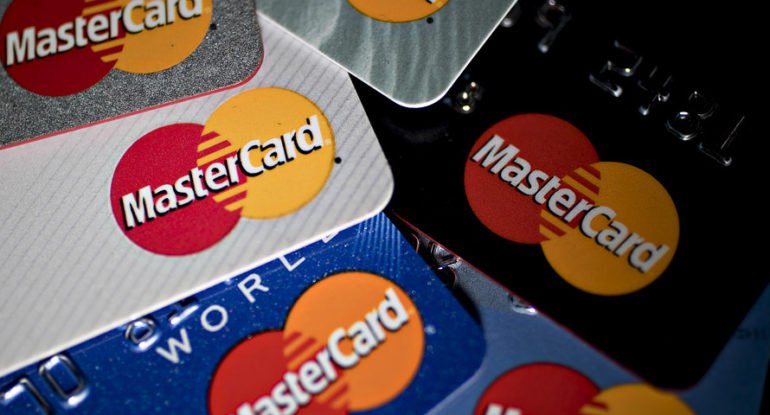Mastercard Focuses on Practical Application of Blockchain Technology

The increase in the value of Bitcoin, Ethereum, Litecoin, and other cryptocurrencies has ascended blockchain into public awareness. But cryptocurrency is not the only application of blockchain, as companies with absolute interests in the technology will point out.
“The sensationalism that media has brought to the blockchain is beginning to burn off,” said ‘Deborah Barta,’ SVP of innovation and startup engagement at Mastercard Labs.
“The people who have been interested in blockchain from the beginning, not as a benefactor but as a technology are now centered on the practical applications of the technology.”
Mastercard is not a company many people compare with blockchain, but it acts as a perfect example of companies investing in applications of blockchain technology outside of the crypto sphere. It has modestly staked a claim as a blockchain R&D leader, filing the third-most blockchain patents in the world.
While it’s not surprising for companies to follow trends, Mastercard has been investing in the multiple applications of the technology since the first Bitcoin billionaire was coined.
“We built our blockchain about 5-6 years ago,” said Barta. “We needed it to mirror the tenants of our payments network in terms of security, resilience, scale, and throughput, and that wasn’t available at the time with open-source blockchains.”
‘Labs,’ the company’s R&D outfit, was launched in 2010 to help stimulate innovation via internal programs and partnerships with enterprises, companies, and startups, likewise. Since its launch, Labs has expanded to 11 offices globally, and its headquarters, located in the ‘Dublin’ suburb of ‘Leopardstown,’ will soon be home to approximately six-hundred employees.
“We have dedicated engineering teams and product-minded folks working at all stages of the product life cycle. There’s a commercial model to sustain, so we’re not just playing in a vacuum. We want to make sure that what we build can be scaled,” said Barta.
Barta joined ‘Labs’ in 2012 and helped shepherd the growth of Mastercard’s blockchain. Since then, the company has been in the weeds reviewing a full spectrum of blockchain applications, both standard and out of the box.
MONEY ON THE MOVE
Not surprisingly, Mastercard has contributed a fair amount of time examining applications of blockchain that complement its existing business offerings.
For instance, consider international money transfers. Someone who has transferred money abroad knows it’s neither cheap nor straightforward. That’s because capital does not just migrate from one bank to another. Commonly, at least one intermediary bank is required to complete international transactions.
These banks serve as agents, linking the gap between banks that don’t have shared accounts and collecting fees for their services. Blockchain eradicates the need for intermediaries, as it develops a direct connection between banks and verifies the existence of the funds being transferred. Mastercard has sought this application of blockchain since late 2017.
Mastercard’s blockchain is permissioned; details are only shared and available by those associated in the transaction. Companies and banks can appeal to access its blockchain ‘APIs’ and use them to create or expand their cross-border payment platforms.
Mastercard doesn’t process any transactions using its blockchain, and no money is sent over it. While the technology is novel, the potential is vital, given the fact that Mastercard’s subsisting settlement network consists of over 22,000 banks.
“We always say that we don’t just play. We’re playing with a purpose, which is pinpoint-driven.”
The company is also reviewing consumer-facing applications of blockchain in the payments space. Barta said her team was developing blockchain-based loyalty solutions and informed that news would hit on those developments soon, although she refused to dive into particulars.
Although Mastercard’s blockchain does not still volunteer support for cryptocurrencies, current news and job postings symbolize that it could soon change. The company has associated with enterprise blockchain technology company ‘R3‘ on an international, B2B payments project. In that initiative, Mastercard is lending its payments network.
It makes sense for Mastercard to entrust its weight to blockchain-based payment solutions. But the company is also experimenting with blockchain applications in more unconventional waters.
‘Provenance’ is Mastercard’s blockchain-based solution for supply chain visibility. The idea is that the same profits blockchain brings to financial transactions, a complete and immutable record of an asset’s journey can also be employed to customer goods, from luxury fashion to salmon.
The Provenance solution has so far seen 2 public pilot programs. The first was this past summer with retailer’Fred Segal’ and American fashion brand ‘Rodarte.’ For two weeks in August, Rodarte traded pieces from a limited-edition collection at ‘Fred Segal’s Sunset Boulevard location.’ Each piece had a QR code that, when scanned by a smartphone, approved the garment’s authenticity by tracking its journey to the store shelf.
Mastercard also brought its ‘Provenance’ solution to grocery stores through a partnership with a consumer supply chain visibility company named ‘Envisible.’ The two have built technology that’s intended to let shoppers at supermarket chain ‘Food City’ track its wholesale seafood journey, from the nets and fishing lines to processing to store delivery, just by scanning a ‘QR code’ on the packaging.
“You may not inherently assume Mastercard and seafood are a natural fit,” said Barta. “But the reality is it makes a ton of sense. If we have visibility across the supply chain, we can offer better enhancements and more efficient operational solutions. We can enable B2B payments between suppliers and buyers and things like artificial intelligence to predictive power analytics.”
In addition to giving companies more meaningful insights into their supply chains, blockchain empowers customers to make more versed purchases. Rather than taking a company at their word and believing that their handbags are ethically sourced or that their food arrives from a sustainable farm, users can see for themselves and decide to spend their money elsewhere if a brand is not adhering to their standards.
Add a comment
You must be logged in to post a comment.




























































